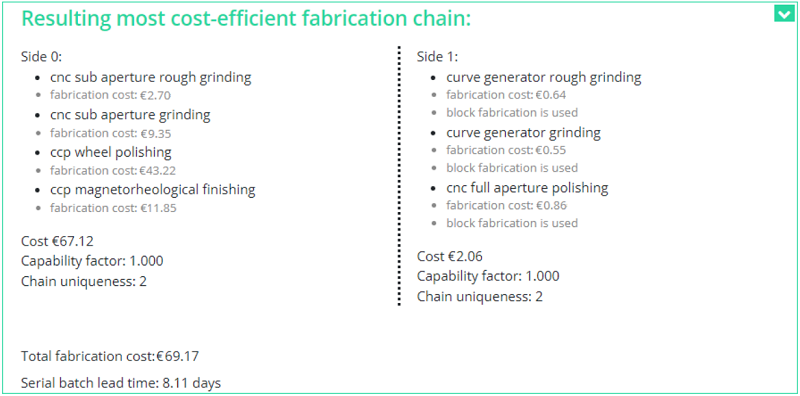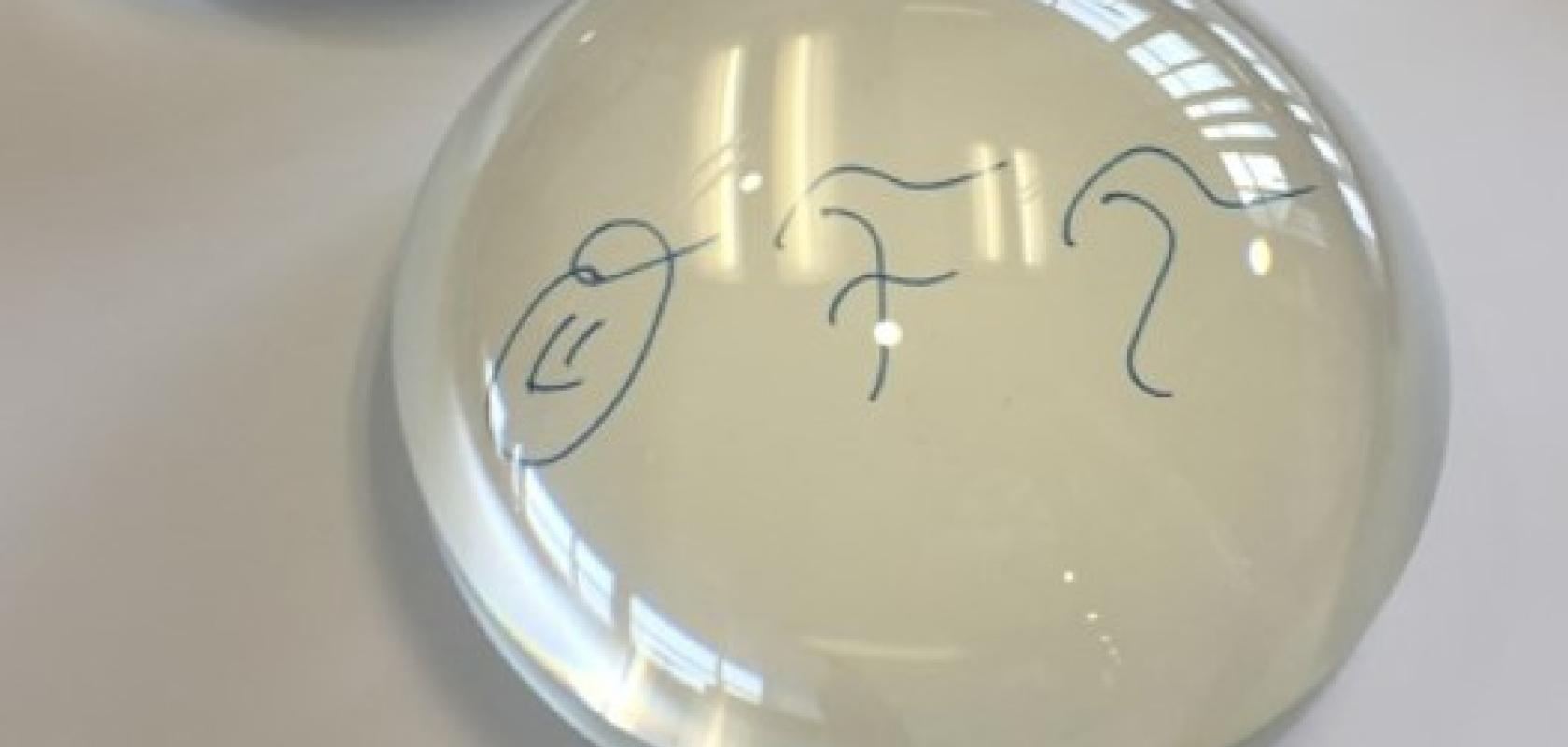From start to finish, the fabrication chain of optical systems is, in its current state at least, an area where misunderstandings can easily be made.
Such was explained to Electro Optics by Oliver Fähnle, head of photonics systems manufacturing at the Eastern Switzerland University of Applied Sciences, and also the chair of the European Optical Society’s industrial advisory committee.
He explained that each stage of the fabrication chain often requires such specialist knowledge that, from the perspective of one stage communicating with another, they may as well be speaking a different language.
‘The fabrication chain begins with an end-user describing an application,’ Fähnle explained. ‘They speak with optical system designers, who, assisted by specialist software such as Zemax and Code V, translate the application of light as a tool into the layout of an optical system.’
System designers produce technical drawings and define aspects such as the number of lenses required, the size of the system, whether there’s an active zoom, the glass shape, accuracy and roughness, and many other factors.
Next come the steps required to produce the system, which is done by optical fabrication designers. Here, there’s another translation step, this time taking the system design and turning it into a series of fabrication steps – rough shaping, fine shaping, finishing, superfinishing, assembly, and so on.
This information, which is passed onto a production department, determines the processes required and ultimately the throughput, quality, and cost of producing the optical system.

Facilitating full understanding across the optical systems fabrication chain will enable further innovation in the sector
‘Production departments again speak their own language,’ Fähnle continued. ‘They determine the types of machines that can serve the required fabrication steps, the optimisation of processes, the education of technicians, the layout of the workshop,’ – another translation step.
‘By the time the optical system is finally produced, the information has had to pass through numerous translations, which leads to loss of information,’ he said. ‘Ultimately, this increases the difficulty of producing optical systems.’
Not only does this create challenges in producing optical systems, Fähnle said, but, in addition, the technology for making optical systems is more diverse and each stage of the fabrication chain is more specialised.
‘This makes it increasingly complicated for people along the chain to understand each other,’ Fähnle said. ‘An optical fabrication designer can try and address their concerns with an optical system designer, but they will have difficulty understanding each other because their respective languages are becoming specialised. One could be talking about zeta potential, surface physics, resonance frequencies and so on, while the other talks about MTF and image resolution, clear aperture, aperture stop etc.’
Optimisation through modulation
Greater understanding is therefore needed between the different steps in optical fabrication, an issue which, according to Fähnle, is being addressed using a process known as modulation.
‘While over the past 20 years the individual stage of optical system design has been modulated with the help of software,’ he explained. ‘For the rest of the fabrication chain, hardly any modulation has taken place. People are getting more and more concerned by this.’
He added: ‘If each stage of the chain can understand each other more clearly, the whole evolutionary process of generating an optical system can be optimised.’
What Fähnle means by modulation is bringing together the physics, knowhow, workmanship, and perspective of each fabrication stage into software packages that can communicate with each other. Over the past couple of years, multiple companies have been developing these packages across the optical system fabrication chain, the first of which emerged in 2020, Fähnle said.
‘Once you have software modulation, then there's a result presented from the software which can be seen by all parties involved,’ he said. ‘The parties can then interpret, discuss and negotiate the results.’
Such modulation would not only overcome the knowledge barriers between the different stages of the optical system fabrication chain, but also any social, psychological and cultural challenges that come with working internationally.
Optical system fabrication is often spread around the globe – the end-user could be in the US while the designers are in Europe and the manufacturers in Asia. Not only could there be differences in technical background, but also cultural differences as well as the language spoken. Standards, such as ISO10110, can help, but do not solve the problem completely.
Artificial intelligence is also contributing to optimise the process of making optical components, such as efforts at ITMO University in Russia1 and the University of Laval in Canada2.
‘We should modulate technology as far as possible so as not to waste time on human interaction that could be performed by software,’ Fähnle said. ‘This would leave room for more innovation and risk-taking.’
The power of modulation
With optical manufacturing chain modulation, it is possible to test a lens during the optical design phase to determine manufacturing costs and the manufacturing techniques necessary. PanDao, a firm co-founded by Fähnle, develops software to simulate the optical fabrication chain using design data.
As an example – making a 75mm-diameter mineral glass aspherical meniscus lens, with a spherical backside, for imaging – the PanDao software calculated a fabrication cost of €69 per lens for a lot size of 10,000 pieces (figure 1). The software suggested that magnetorheological finishing be used for the aspherical side, and CNC polishing for the spherical side.

Figure 1: Fabrication chain modulation of a 75mm diameter aspherical meniscus lens. (Credit: M.Tinner/PanDao)
Fähnle believes there’s potential for software such as PanDao to communicate with optical design software. However, there’s still much to do before the benefits of modulating the entire fabrication chain can be seen. Fähnle said that sequencing commercial production chains and workload planning is also underway.
Next steps could be modulating complexity and the level of automation in processing systems. Fähnle said: ‘This could lead to artificial intelligence-assisted designing and planning along the whole chain of generating optical systems: from optical design through to fabrication and eventually applied production.’
References
- Livshits I.L., Glebovskyi A.S., Protsuto M.V., Volkova S.L. Interdisciplinary approach for simulation of starting points for optical and architectural design // Advanced Optical Technologies - 2019, Vol. 8, No. 2, pp. 135-144
- G. Côté, J. Lalonde, and S. Thibault, "On the Use of Deep Learning for Lens Design," in OSA Optical Design and Fabrication 2021 (Flat Optics, Freeform, IODC, OFT), F. Capasso, W. Chen, P. Dainese, J. Fan, J. DeGroote Nelson, F. Duerr, J. Rogers, J. Rolland, P. Clark, R. Pfisterer, H. Rehn, S. Thibault, M. Jenkins, D. Wook Kim, and N. Trela-McDonald, eds., OSA Technical Digest (Optical Society of America, 2021), paper 120781A.


